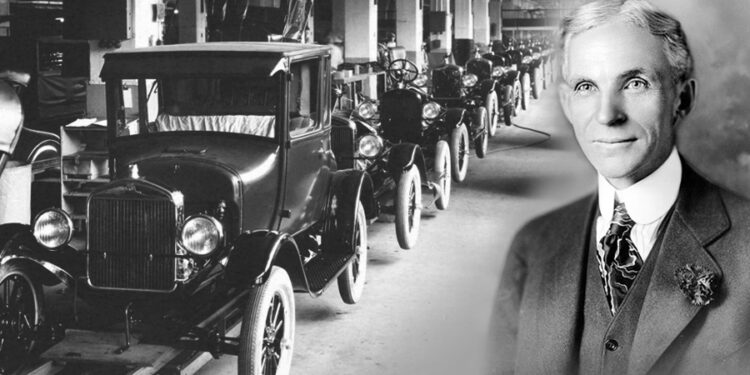Henry Ford, born in 1863 with his innovative ideas in producing motor vehicles and excellent engineering works went on to become the hero of people in the industry. His primary goal was always to produce petrol propelled motor vehicle and in 1896 he developed his first self propelled vehicle which he called the quadricycle. After a lot of struggles and legal battles, he founded the Ford Motor Company in 1903 with only $28000. He dreamed of making efficient affordable cars and in 1908 produced the popular model T. Henry Ford changed the world with his revolutionary ideas and transformed the motor industry with his leadership. The main aim of this case study is to describe his major contributions to the study of organizational behavior and discuss his leadership style. Every manager or leader’s aim is to achieve a workplace that has a pleasant setting, consists of employees who want to Continue reading
Organizational Behavior Concepts
Crisis in Organizations: Stages and Types
Companies face problems all the time, and solve them one way or another. Sometimes one of these problems is difficult-at least at the time it occurs-and it becomes public interest with the help of the press. This problem is then known as a Crisis, where the company is faced with legal, political, financial and governmental impact on its business. The most serious property of crises is the element of surprise. The worst part in their handling is being unprepared. Crisis can come from nowhere at any time; natural disasters, human error, and industrial accidents can all cause crisis. Sometimes the cause of a crisis is management itself; managers may insist that they face no crisis, and they fall into the brink of lying and rejection of its existence. Then, when the time of the deadline comes their answer to why the job is not finished will be: “We faced trouble Continue reading
Use of Skinner’s Reinforcement Theory in Behavioral Modification
What is Behavioral Modification? All organisations are set up with particular core goals and aims in mind. Various resources including money, machines and manpower are utilized to achieve these goals. Modern businesses often refer to their Human Resources (manpower) as their biggest and most important asset and it is widely understood that this single resource plays a vital and irreplaceable role in the attainment of success and the achievement of an organisation’s objectives. Thus, human behavior at work plays an essential role in the smooth functioning of day to day activities as well the targeted long term goals. It is essential for a manager to posses the skills to identify and predict undesired behavior and bring about required changes in order to make human behavior at work productive and supportive to the organisation’s goals. In business language the art of modifying and moulding human behaviour is known as behavioural modification. Continue reading
Concept of Personality in Organizational Behavior
The term personality has been derived from the Latin word “Persona” which was associated with Greek theater in ancient times. The Greek actors commonly used to wear masks on their faces during their performances on the stage. The mask worn by the actors was called persona. Personality was thought to be the effect and influence which the individual wearing a mask left on the audience. Personality is a term that has many general meanings. Sometimes the word refers to the ability to get along well socially. For example, we speak of experiences or relationships, which are said to give a person “more personality.” The term may also refer to the most striking impression that an individual makes on other people. We may say, ‘she has a shy personality’. To a psychologist, personality is an area of study that deals with complex human behavior, including emotions, actions, and cognitive (thought) processes. Continue reading
Relationship Between Organizational Structures and Cultures
Organizational Structure Organizational Structure is the strategic manner by which organizations arrange (or rearrange) themselves. This is essentially important in determining how organizations plan on utilizing their resources, particularly their human resources. To do so efficiently, certain questions need to have precise answers such as the specific responsibilities of each individual within the organization, to whom exactly they report and most importantly the coordination process that is to be implemented to bring together all these people and processes simultaneously. Bearing in mind that any framework followed needs to be consistent with the organizations main objectives, a formal channel defining the lines of authority from top to bottom (i.e. Hierarchy of Authority) is established which identifies clearly who is responsible for which personnel and/or tasks. Traditionally, the authority of decision-making has been a centralized process (i.e. directed to higher-level management), but with increasing challenges & innovation in recent times, many organizations Continue reading
4 Phases of Hawthorne Experiment – Explained
At the beginning of the 20th century, companies were using scientific approaches to improve worker productivity. But that all began to change in 1924 with the start of the Hawthorne Studies, a 9-year research program at Western Electric Companies. The program, of which Elton Mayo and Fritz Roethlisberger played a major role, concluded that an organization’s undocumented social system was a powerful motivator of employee behavior. The Hawthorne Studies led to the development of the Human Relations Movement in business management. The experiment was about measuring the impact of different working conditions by the company itself (such as levels of lighting, payment systems, and hours of work) on the output of the employees. The researchers concluded that variations in output were not caused by changing physical conditions or material rewards only but partly by the experiments themselves. The special treatment required by experimental participation convinced workers that management had a Continue reading



